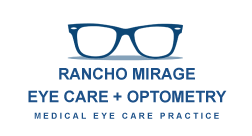 Driving is an important part of our daily lives, but it can be quite challenging for people with low vision. Sub-par visual acuity, peripheral vision loss, sensitivity to glare, night blindness, and other visual problems can make it uncomfortable or even unsafe to drive.
Driving is an important part of our daily lives, but it can be quite challenging for people with low vision. Sub-par visual acuity, peripheral vision loss, sensitivity to glare, night blindness, and other visual problems can make it uncomfortable or even unsafe to drive.
Luckily, not all hope is lost! Low vision aids and devices prescribed by the low vision optometry team at Low Vision Center At Rancho Mirage Eye Care Optometry in Rancho Mirage enable many people with low vision to drive comfortably and safely.
What Is Low Vision?
Low vision is a visual impairment that can’t be fixed with regular corrective measures like contacts, glasses, medication or surgery. It’s defined as visual acuity (the sharpness of vision) that falls between 20/70 and 20/400, or when visual field is at 20 degrees or less, even with glasses or contacts.
Permanent vision loss is often caused by eye injuries and brain injuries, or eye conditions like glaucoma, diabetic retinopathy, and age-related macular degeneration.
Low vision makes doing simple activities like reading, writing and driving difficult. It also makes it hard to detect familiar faces, see fine details, and see in dim light.
What Aids and Devices Help People Drive with Low Vision?
Even though there are many challenges presented by low vision, a person with low vision can often drive safely using the following aids and devices:
- A bioptic telescope is a small telescope that mounts on glasses and allows the driver to see distant objects more clearly. Magnifying lenses that attach to the rearview mirror can also be used to make the road ahead more visible.
- Prism glasses are ideal for driving with low vision because they’re designed to enhance peripheral vision. They’re particularly effective in correcting an eye condition called retinitis pigmentosa, which impacts peripheral vision.
- Low vision glasses that are tinted yellow or orange can help with lower contract sensitivity, which makes it hard for people with low vision to see objects separately from a background.
- A non-optical solution is an electronic driving system that’s adapted for a car’s specific model and can help some individuals with low vision drive safely. Adaptive devices include sensors that detect obstacles in the road and offer visual and audible warnings to the driver. A “heads-up display,” which projects details like navigation and speed, can also be used.
Find a Low Vision Specialist in Rancho Mirage
If you’re struggling with low vision, schedule an appointment with an IALVS optometrist at Low Vision Center At Rancho Mirage Eye Care Optometry in Rancho Mirage. We’ll assess your usable vision and recommend the low vision aids and devices that can help you continue to do the things you love.
